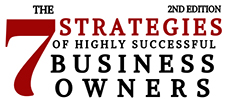Click to Print: Seven Phases of Investing and Tax Shelters
| Question: | Should I contribute to a retirement plan? |
| Answer: | Yes, if you have the ability to, and if you have a tax liability and can offset it (income not too high). |
| Question: | What is the best investment? |
| Answer: | Contribute to your employer’s plan if they have it. This is the best. Otherwise, you can do an IRA, SEP-IRA, or an owner 401K. If you have the cash flow and higher income, go for the owner 401K, otherwise go with one of the others. |
| You can contribute up to $53,000 to a 401K annually and SEP-IRA, which can be a big offset to taxable income! | |
| Question: | Where do I invest? |
| Answer: | I have two thoughts about this. First, if you want investment planning and advise, and therefore pay the broker commissions, I can give you a few referrals based upon specifics. Call us and we can discuss it. This could pay for itself, so don’t simply overlook this option. |
| The lowest cost option that I am aware of is through Vanguard or TD Ameritrade. | |
| And, if you have employees, consider the lowest cost 401K that exists at www.americasbest401k.com | |
| Question: | Are there deadlines for these plans? |
| Answer: | Oh yes! Some plans require setting up by December 31st of the tax year to have the benefit. Others allow you to set up and make contributions by the tax deadline. Don’t delay though, as you should be setting up a plan now and making ongoing contributions each month. |
*This is the first type of tax shelter. A pre-tax investment instrument.
Phase 2 Investing: The ROTH – After Tax Investment
Next, if you still have cash flow, you should set up and contribute to a ROTH plan. The basic concept is, when you invest after tax cash flow in a ROTH IRA or 401K (ROTH 401K’s are a new option), the earnings (interest, capital gains, etc) this investment makes are NOT TAXABLE when you withdraw them at retirement. So, your investment can grow tax free. And, there are ways to make early withdrawals if needed without penalty. This you will want to consult an advisor on.
Phase 3 Investing: Investment Accounts
Once you have minimized your tax burden by investing in the pre-tax and after tax ROTH options, and you still want to invest your resources, this is the next place to invest capital. You can write off the investment expenses, invest in tax sheltered investments as desired, and place your cash flow in a plan that may provide growth and earnings for retirement.
Phase 4 Investing: Business and Real Estate Investments
One of the most rewarding ways to turn capital into more capital is by becoming a business owner or an owner of rental real estate. Both have the potential for a tax write-off when they do not earn profits. Both can potentially be sold later. You have greater control of these than you do investment instruments.
Phase 5 Investing: Specific Life Insurance
This is only going to be for a small number of people with extra residual income. It is not a tax deduction, but the earnings in retirement years come tax free. The crux if this very particular plan is that life insurance is purchased as a unique, whole life plan. In succeeding years, it can be borrowed against in needed or for lending purposes. At retirement, early “life insurance proceeds” can be withdrawn tax free. If there is a serious accident, up to 50% of the benefit can be received at that time. And, upon death, heirs have a life insurance benefit. If this sounds appealing, feel free to schedule a consultation and we can discuss it further.
Phase 6 Investing: Secured Notes
If you have cash in the bank, and looking for a place to earn good interest, this could be the place. Lenders are looking for investors, is what it amounts to. They execute a loan, secured by real property, and you are the bank. You earn 10% ROI annually on this investment. Should the lender default, you are secured by the property and the lender will step in and foreclose and get you back your investment. If you are interested in this investment, contact our office for information on who is doing the lending.
Phase 7 Investing: Private Money Lending
Within your investment, such as an IRA or 401K, you can choose to turn this money over to a company that will seek unsecured and secured loans that you will fund. There is a higher risk with these, but the payoff is a 6% – 18% interest rate. If you are interested in this investment, contact our office for information on who is doing the lending.

